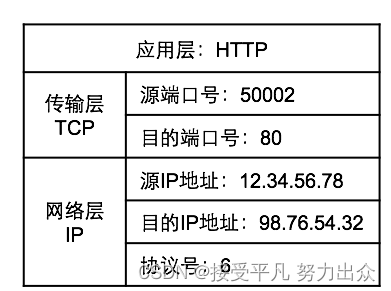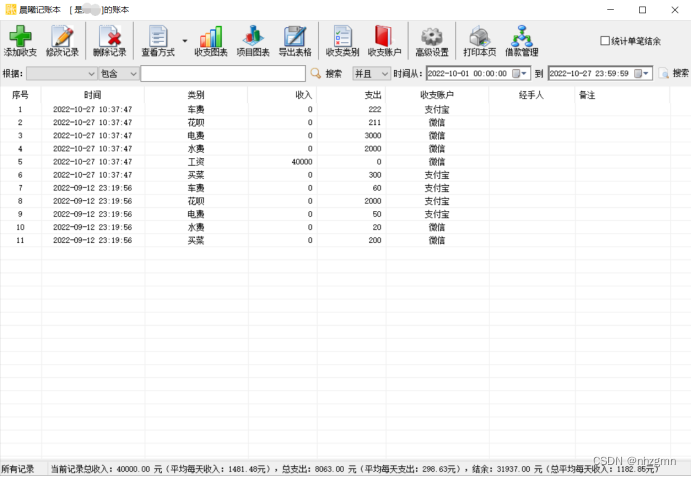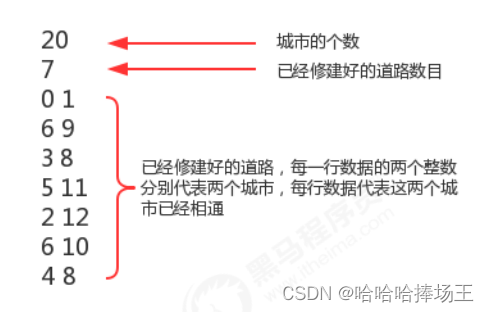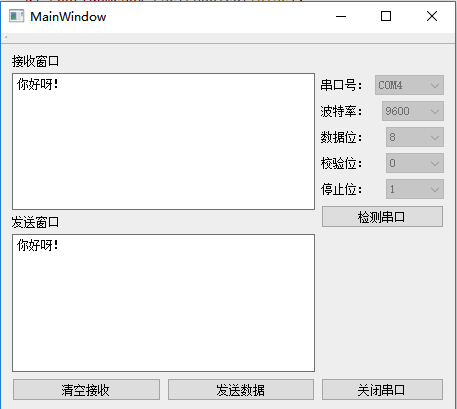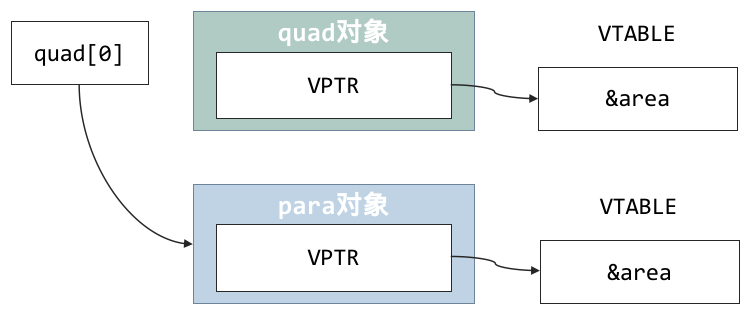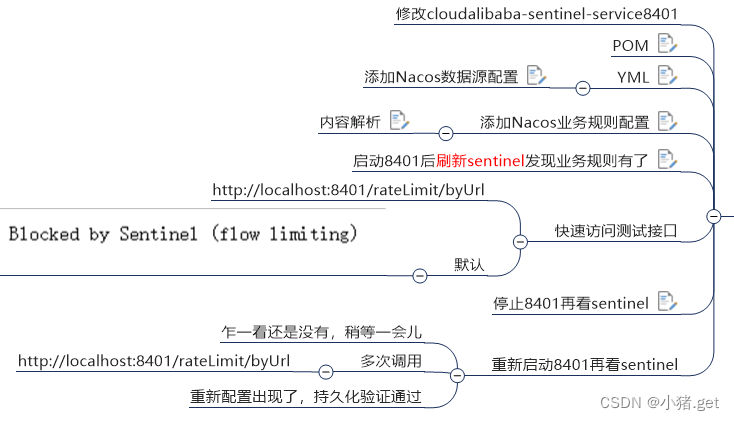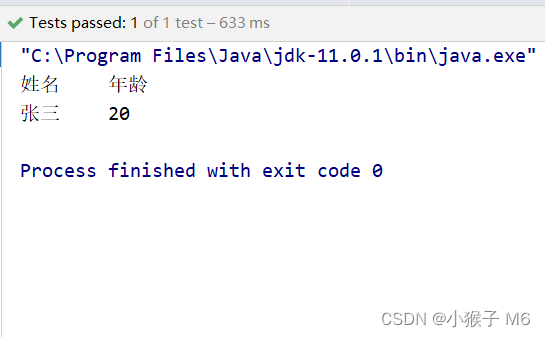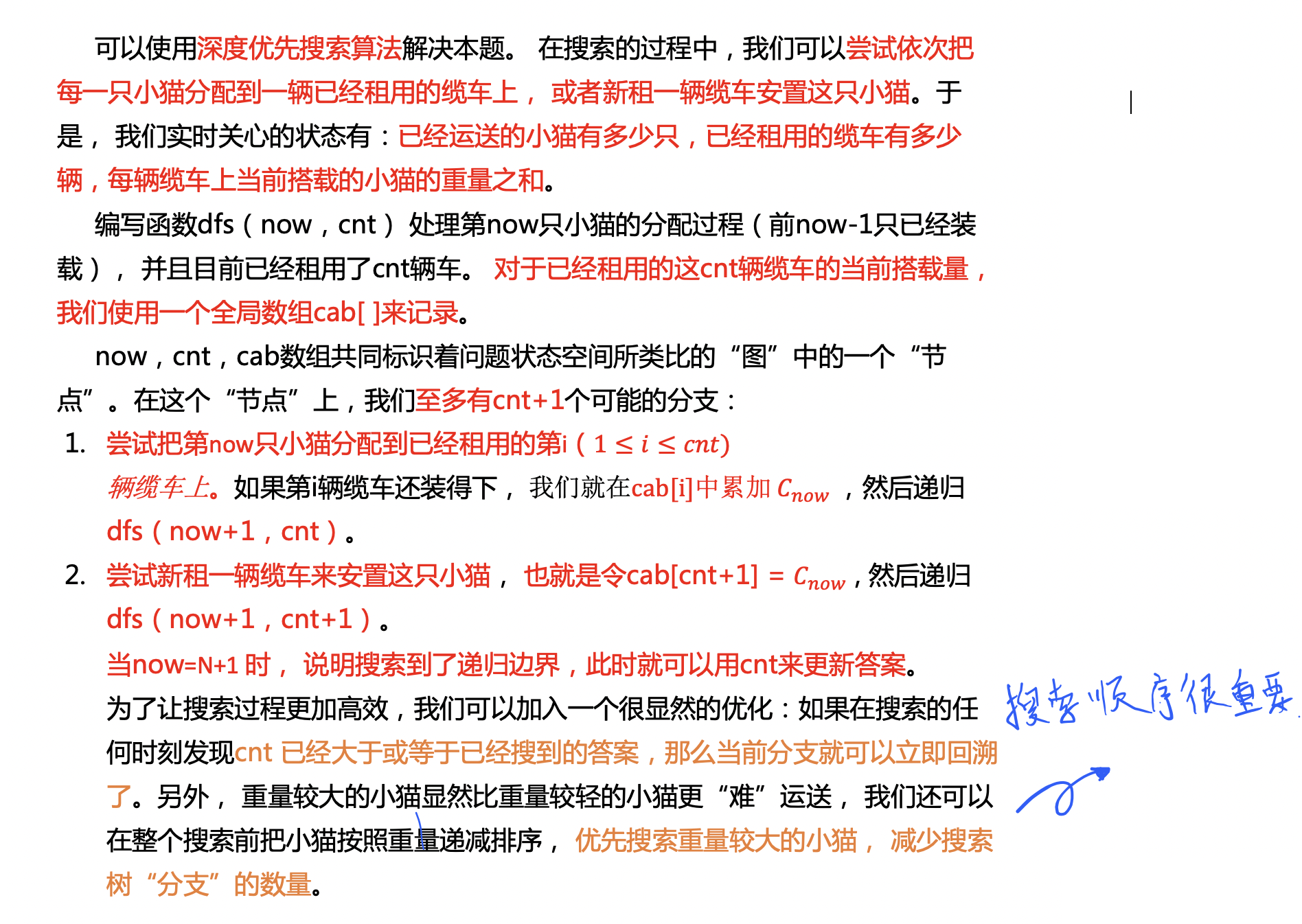前言:
本文主要是通过源码来解读一些自己还不懂的地方,一些数据结构上的东西,不做过多的解读。
文章目录
- 一、容器体系
- 二、List容器
- 2.1 ArrayList源码
- 2.2 Vector 源码
- 2.3 LinkedList
- 三、Set容器
- 3.1 HashSet
一、容器体系
容器总的来说分为两大类:
1、Collection:
存放的是单建元素(就是单个元素)
2、Map<K,V>:
存放的键值对(以Key-Value的方式存在)
- 1、Collection下的两大接口,List 和 Set

- Map下的三大容器(都是以建值对的方式向Map中存放值)

二、List容器
List定义的模板方法如下:

2.1 ArrayList源码
底层的数据结构是数组,所以使用idx
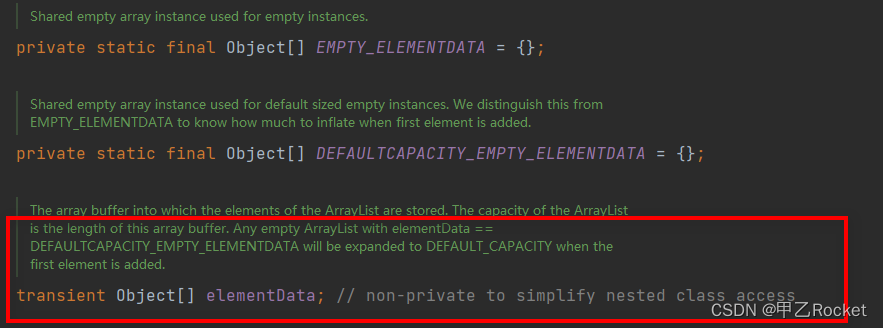
学习重点在于扩容(add方法中很重要):
// 测试代码
public class ListTest {
public static void main(String[] args) {
List<Object> list = new ArrayList<>();
for (int i = 0; i < 10; i++) {
list.add(i);
}
list.add(20000);
}
}
1、使用默认的构造函数

2、调用add方法
- (1)先确认是否需要扩容

-(2)这就是默认容量为10的代码

-(3)明确容量(判断是否扩容)
1、modCount这是一个全局变量,每次添加值都会对其++,
2、判断现有的数组长度是否已经不能容下新元素了
3、在我的测试代码中,前十个是不会扩容的,到第11个才会进入if

-(4)扩容
将原来的数组扩容原来的1.5倍得到一个新的数组,将原来的值copy到新数组。
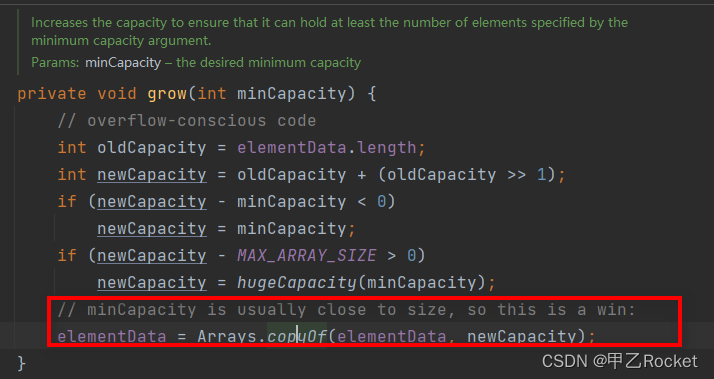
2.2 Vector 源码
其实看了源码可以知道:
Vector底层也一个数组,基本上和ArrayList一直
通过看源码,我们可以知道Vector是通过对每个方法添加synchronized关键字来保证这是一个线程安全的容器。
那么这样会使我们再使用这些方法时效率不高。
所以我们再日常开发中,很少使用他,但是再有竞争的情况下可以使用一下【其实使用也不是特别多,我们都是通过自己去完成的多】

2.3 LinkedList
1、底层是一个双向链表的数据结构
源码是定义了一个node节点,来存放前驱、后驱和元素
他的CRUD也是比较简单,主要就是基于双向链表的CRUD,要考虑好前驱指针和后驱指针指向的地址,就能弄明白。
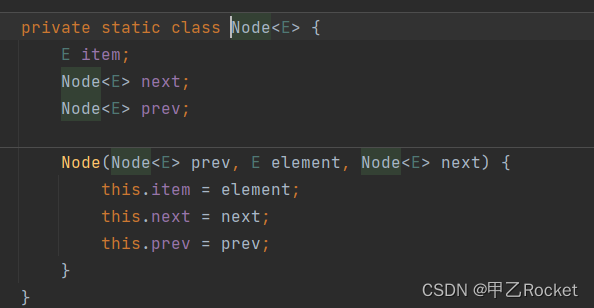

- List下ArrayList和LinkedList的比较
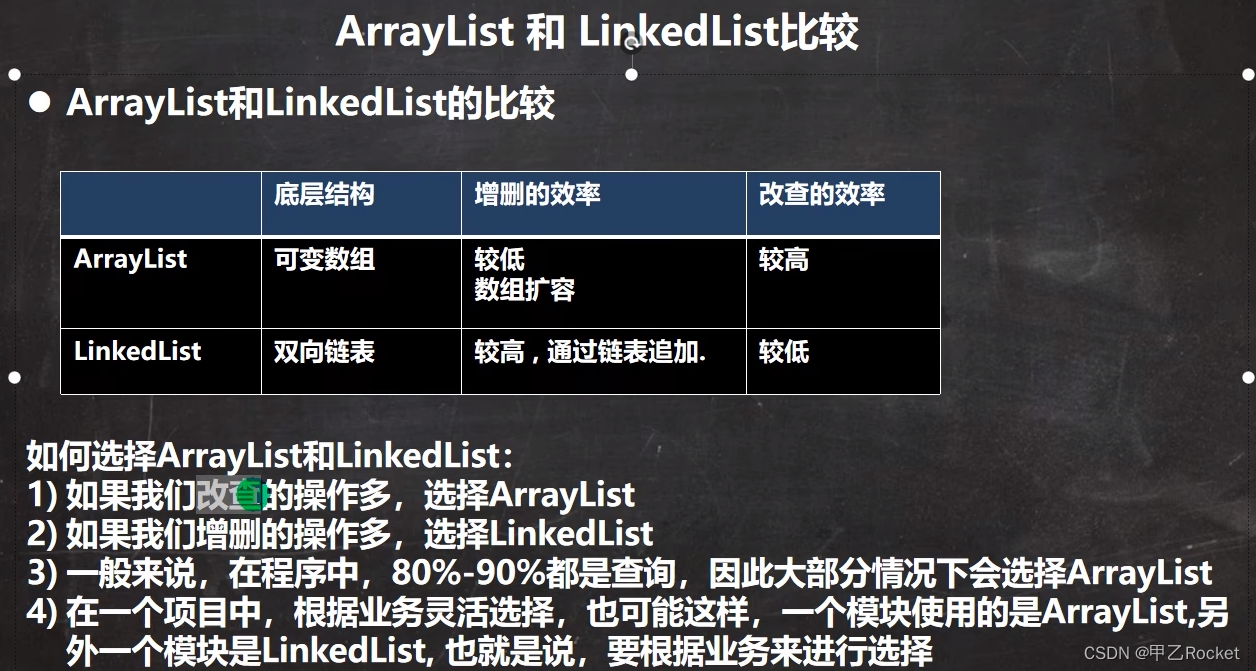
三、Set容器
- 简介:
不可重复,无序(其实是按运算出来的hash值排序的【这里不是hashCode】)
3.1 HashSet
- HashSet简介:
他的底层是由HashMap完成的,就是等价于HashMap
总体add流程如下图:

- 测试代码
HashSet<Object> objects1 = new HashSet<>();
for (int i = 0; i < 2; i++) {
objects1.add(i);
}
// 重复(看比较)
objects1.add(2);
- 源码解读
1)构造方法
构造方法也很清楚就是,hashMap

2)add方法
-
2.1 向hashMap中put数据,key就是我们add进来的值,Value是共享的一个填充对象
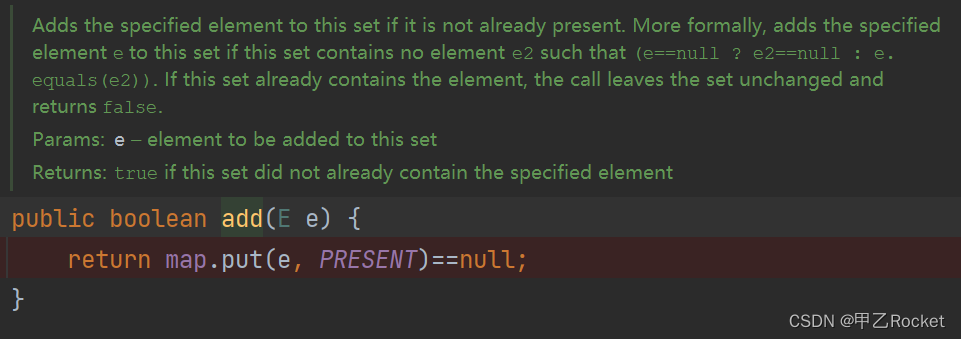
填充对像

===========>这里往下就是HashMap的东西咯,小东西真面目流露了 -
2.2 再往下面调用Map中的put方法了

-
2.3 将hashCode进行运算
将hashcode进行高16位和低16位进行异或运算(这样做的目的就是尽量的避免哈希冲突)==》得到hash值

- 2.4 put的核心代码注释
/**
* Implements Map.put and related methods
*
* @param hash hash for key
* @param key the key
* @param value the value to put
* @param onlyIfAbsent if true, don't change existing value
* @param evict if false, the table is in creation mode.
* @return previous value, or null if none
*/
final V putVal(int hash, K key, V value, boolean onlyIfAbsent,
boolean evict) {
// 临时辅助遍历
Node<K,V>[] tab; Node<K,V> p; int n, i;
// 当定义的属性,数组位null 或者长队为0时调用resize方法进行长度的重置(下面的第二段代码注释)
if ((tab = table) == null || (n = tab.length) == 0)
n = (tab = resize()).length;
// 使用n-1&hash计算下标值(数组长度&hash)
if ((p = tab[i = (n - 1) & hash]) == null)
tab[i] = newNode(hash, key, value, null);
else {
Node<K,V> e; K k;
if (p.hash == hash &&
((k = p.key) == key || (key != null && key.equals(k))))
e = p;
else if (p instanceof TreeNode)
e = ((TreeNode<K,V>)p).putTreeVal(this, tab, hash, key, value);
else {
for (int binCount = 0; ; ++binCount) {
if ((e = p.next) == null) {
p.next = newNode(hash, key, value, null);
if (binCount >= TREEIFY_THRESHOLD - 1) // -1 for 1st
treeifyBin(tab, hash);
break;
}
if (e.hash == hash &&
((k = e.key) == key || (key != null && key.equals(k))))
break;
p = e;
}
}
if (e != null) { // existing mapping for key
V oldValue = e.value;
if (!onlyIfAbsent || oldValue == null)
e.value = value;
afterNodeAccess(e);
return oldValue;
}
}
++modCount;
if (++size > threshold)
resize();
afterNodeInsertion(evict);
return null;
}
// 注意:阈值
/**
* Initializes or doubles table size. If null, allocates in
* accord with initial capacity target held in field threshold.
* Otherwise, because we are using power-of-two expansion, the
* elements from each bin must either stay at same index, or move
* with a power of two offset in the new table.
*
* @return the table
*/
final Node<K,V>[] resize() {
// 定义老的数组
Node<K,V>[] oldTab = table;
int oldCap = (oldTab == null) ? 0 : oldTab.length;
int oldThr = threshold;
int newCap, newThr = 0;
if (oldCap > 0) {
// 必须是二次幂
if (oldCap >= MAXIMUM_CAPACITY) {
threshold = Integer.MAX_VALUE;
return oldTab;
}
else if ((newCap = oldCap << 1) < MAXIMUM_CAPACITY &&
oldCap >= DEFAULT_INITIAL_CAPACITY)
newThr = oldThr << 1; // double threshold
}
else if (oldThr > 0) // initial capacity was placed in threshold
newCap = oldThr;
else { // zero initial threshold signifies using defaults
// 这里是初次使用的默认值是16
newCap = DEFAULT_INITIAL_CAPACITY;
// 这是给扩容值进行计算(阈值是0.75*默认长度)
//【这里之所以使用阈值计算扩容值,是为了防止并情况下扩容的问题假设你到满了才扩容,比如还剩4个位置,刚好同时来了5个,那怎么办呢】
newThr = (int)(DEFAULT_LOAD_FACTOR * DEFAULT_INITIAL_CAPACITY);
}
if (newThr == 0) {
float ft = (float)newCap * loadFactor;
newThr = (newCap < MAXIMUM_CAPACITY && ft < (float)MAXIMUM_CAPACITY ?
(int)ft : Integer.MAX_VALUE);
}
threshold = newThr;
@SuppressWarnings({"rawtypes","unchecked"})
Node<K,V>[] newTab = (Node<K,V>[])new Node[newCap];
table = newTab;
if (oldTab != null) {
for (int j = 0; j < oldCap; ++j) {
Node<K,V> e;
if ((e = oldTab[j]) != null) {
oldTab[j] = null;
if (e.next == null)
newTab[e.hash & (newCap - 1)] = e;
else if (e instanceof TreeNode)
((TreeNode<K,V>)e).split(this, newTab, j, oldCap);
else { // preserve order
Node<K,V> loHead = null, loTail = null;
Node<K,V> hiHead = null, hiTail = null;
Node<K,V> next;
do {
next = e.next;
if ((e.hash & oldCap) == 0) {
if (loTail == null)
loHead = e;
else
loTail.next = e;
loTail = e;
}
else {
if (hiTail == null)
hiHead = e;
else
hiTail.next = e;
hiTail = e;
}
} while ((e = next) != null);
if (loTail != null) {
loTail.next = null;
newTab[j] = loHead;
}
if (hiTail != null) {
hiTail.next = null;
newTab[j + oldCap] = hiHead;
}
}
}
}
}
return newTab;
}


